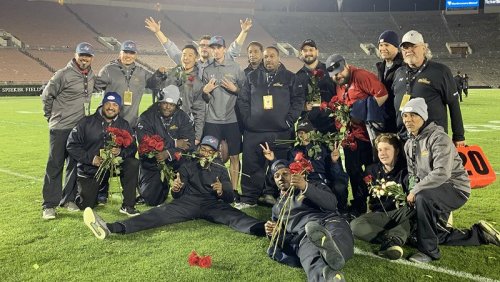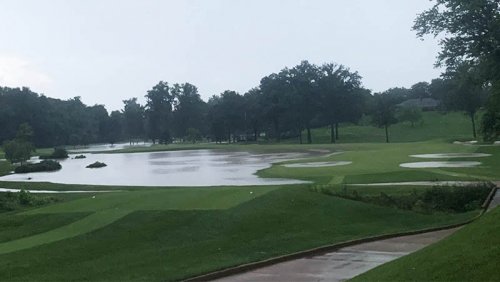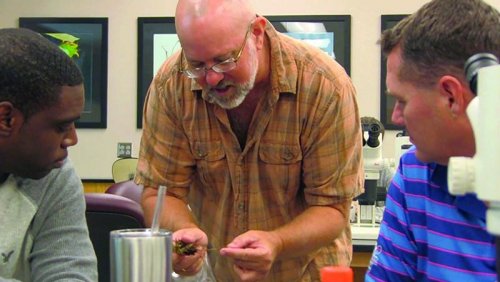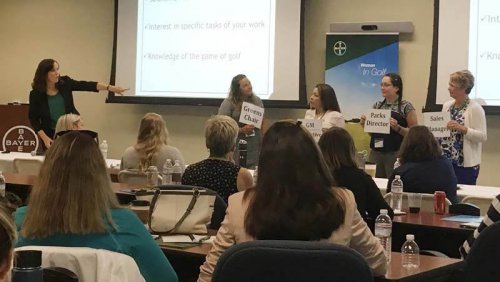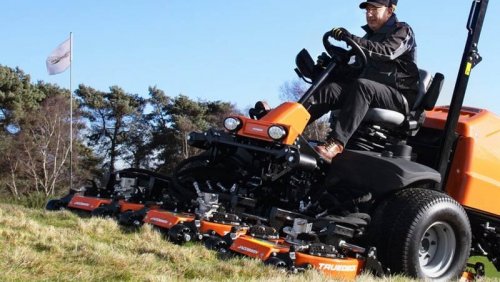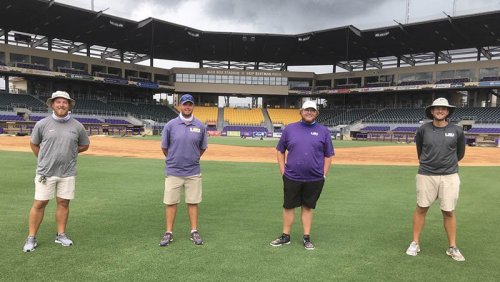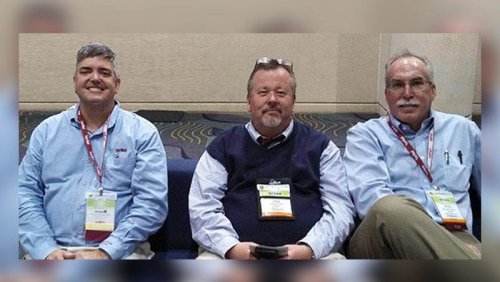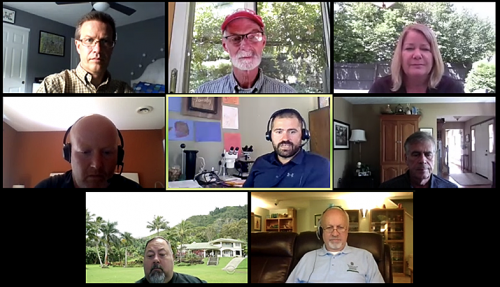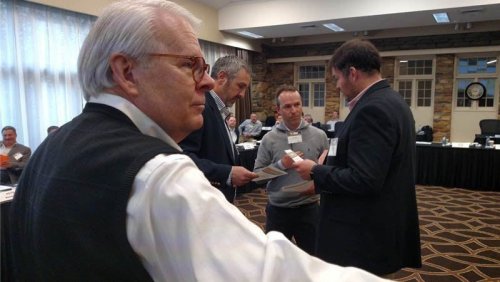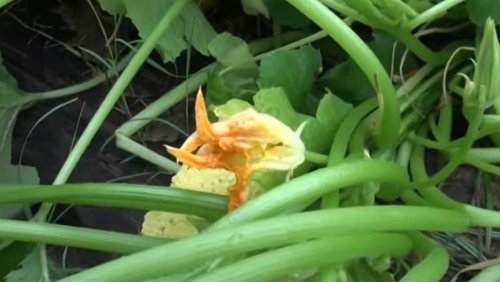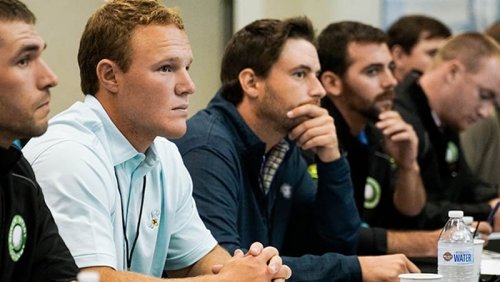
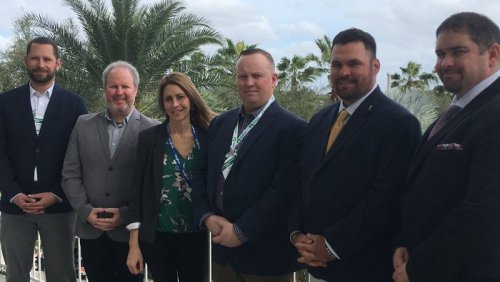
With Hurricane Dorian bearing down on The Bahamas just last summer, Matt DiMase didn't give much thought to leaving.
The superintendent at The Abaco Club on Winding Bay, DiMase could have ridden out the storm with his wife and kids in the safety of the family home in Ocala, Florida.
But he didn't.
DiMase rode out the storm, brought the devastated golf course back from the dead and played a key role in a humanitarian effort to help members of the club, his employees and members of his Bahamian community. His selflessness earned him the honor of being named the recipient of the 20th annual TurfNet Superintendent of the Year Award, presented by Syngenta.
"For us, this is a job, but for our members, this club is their investment," DiMase said when he received the award at the last Golf Industry Show from Syngenta turf market manager Stephanie Schwenke (pictured above). "I told my team we can stay and protect their property, or we can abandon ship and who knows what will happen. . . . I didn't want to leave. I wanted to stay because of the people."
Nominations for DiMase's successor are now being accepted. Although it's hard to imagine anyone going through a more trying experience than what DiMase faced in 2019, there has been much about 2020 that has been hard to believe.
A panel of judges will select five finalists and ultimately the winner from the list of nominees. In a year that will be defined by a global crisis and one in which people starved for outdoor recreation have flocked to courses around the country, the nominations should be plentiful.
Criteria on which nominees are judged include: labor management, maximizing budget limitations, educating and advancing the careers of colleagues and assistants, negotiating with government agencies, preparing for tournaments under unusual circumstances, service to golf clientele, upgrading or renovating the course and dealing with extreme or emergency conditions.
Click here to submit a nomination. Deadline for nominations is Dec. 1. Typically, the winner receives two slots on the annual TurfNet members golf trip, but with travel up in the air for the foreseeable future, an alternate prize (that has yet to be determined) will be awarded to the winner.
Previous winners include: Matt DiMase, The Abaco Club on Winding Bay, Cherokee, Great Abaco, Bahamas (2019); Carlos Arraya, Bellerive Country Club, St. Louis, MO (2018); Jorge Croda, Southern Oaks Golf Club, Burleson, TX, and Rick Tegtmeier, Des Moines Golf and Country Club, West Des Moines, IA (2017); Dick Gray, PGA Golf Club, Port St. Lucie, FL (2016); Matt Gourlay, Colbert Hills, Manhattan, KS (2015); Fred Gehrisch, Highlands Falls Country Club, Highlands, NC (2014); Chad Mark, Kirtland Country Club, Willoughby, OH (2013), Dan Meersman, Philadelphia Cricket Club (2012), Flourtown, PA; Paul Carter, The Bear Trace at Harrison Bay, Harrison, TN (2011); Thomas Bastis, The California Golf Club of San Francisco, South San Francisco, CA (2010); Anthony Williams, Stone Mountain (GA) Golf Club (2009); Sam MacKenzie, Olympia Fields (IL) Country Club (2008); John Zimmers, Oakmont (PA) Country Club (2007); Scott Ramsay, Golf Course at Yale University, New Haven, CT (2006); Mark Burchfield, Victoria Club, Riverside, CA (2005); Stuart Leventhal, Interlachen Country Club, Winter Park, FL (2004); Paul Voykin, Briarwood Country Club, Deerfield, IL (2003); Jeff Burgess, Seven Lakes Golf Course, Windsor, Ontario (2002); Kip Tyler, Salem Country Club, Peabody, MA (2001); Kent McCutcheon, Las Vegas (NV) Paiute Golf Resort (2000).
- Read more...
- 2,205 views

